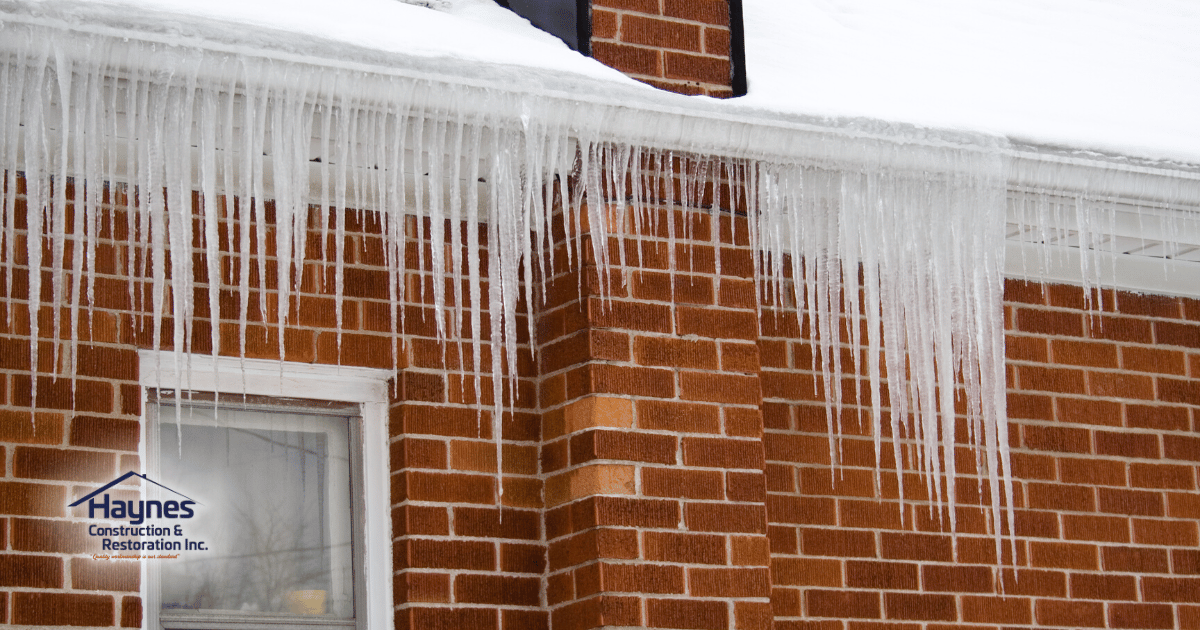Let it snow, let it snow… except when it piles up! Accumulating snow and ice dams can cause significant damage to your roof.
ICE DAMS: Large chunks of ice that form on the eaves and gutters of your roof.
They are not only a wintertime nuisance, but can be very damaging to your home overall. The good news? You can prevent any major damage to your roof by being proactive with upkeep.
Read on to learn more!
To better understand these winter monsters, what exactly causes them?
Just-below freezing temperatures are the perfect conditions for ice dams to form, days where the temperature is around 30-32°F. If spots on your roof are just above 32°F on these days, ice dams will form as snow melts on those warmer spots and refreezes at the cold spots.
Ice dams form when different parts of your roof have different temperatures, some spots being cooler and some being warmer. This causes snow to melt in the warmer spots then refreeze in the cooler spots (which are typically on the edge of your roof). While these ice dams may look harmless, if they continue to melt and refreeze at different spots on your roof they can be damaging to your home.
Damaging on the inside.
Melted water seeps underneath the shingles of your roof, drips through your insulation and other roofing materials, and down into your walls and ceilings. The water inside your walls can peel the paint off, cause unsightly stains, and be a breeding ground for mold and mildew leading to thousands of dollars in damage and respiratory issues from the mold.
Another culprit for ice dams: hot attics.
Hot attics in the winter are caused by a lack of, or ineffective placement of, attic insulation. If you have warm air seeping out of your attic, the surface temperature of the warmer spots on the roof will cause water to melt, causing the ice dam. As hot attics cause hot roofs, you can prevent ice dams by properly insulating your home and ventilating your attic.
Take preventative action and spare your home and roof from the dangers of ice dams!
On days that have that just-below-freezing temperature outside, carefully rake the lower edge of your roof as much as possible to get rid of the snow. If there is no snow on the edge of your roof, it is unlikely for an ice dam to form.
It is important to NOT attempt to remove an ice dam yourself. This is extremely dangerous and can severely damage your roof. If you must remove it, you can use a calcium chloride ice melt. Be sure not to use rock salt or sodium chloride which can cause damage to the roof.
Remember, if you are using a ladder in snowy and icy conditions you need to make sure you are safe.
Don’t let the snow and ice keep you from enjoying some winter fun, give us a call! Haynes Construction will provide you with the guarantee of keeping your roof safe and secure over your head.
Let us help you keep your home free of water and ice damage - reach out for a free quote.






